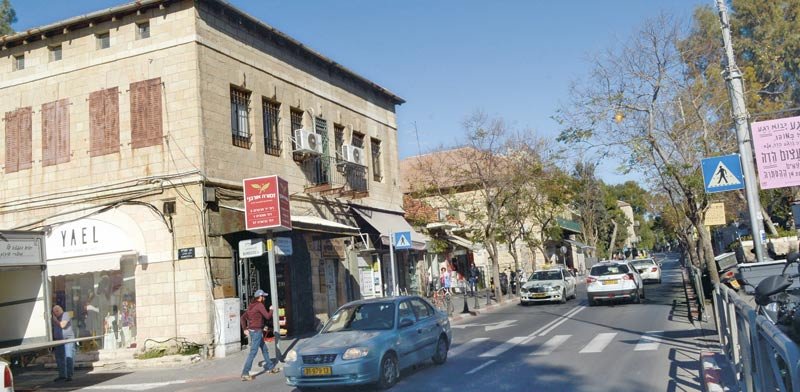Late last week, the subcommittee for objections of the Jerusalem District Planning and Building Commission in the planning administration approved the plan for building a light rail route on Emek Refaim Street in Jerusalem. The subcommittee put an end to a campaign by residents of the street lasting many months against the route. The residents argued that the light rail would disrupt the street, overburden the adjacent streets with vehicles, and do critical damage to businesses and residents on the street. The residents recruited MKs, Jerusalem city council members, and prominent Jerusalemites to their struggle.
The subcommittee members stated, "We were convinced that the Emek Refaim option offered the best route for the light rail for all of Jerusalem's residents from both the transportation and urban points of view. The proposed route directly connects southwestern Jerusalem to the city center, and greatly improves public transportation service to this area. The route also substantially improves transportation access to Emek Refaim Street and the Moshavot area in Jerusalem. It will develop Emek Refaim Street as a municipal cultural, recreational, and commercial center, while significantly improving the municipal environment. The proposed track will run the full length of the street without damaging historic buildings, with very little damage to the old trees currently growing in the area."
The residents' prolonged campaign was accompanied by many demonstrations. The route's opponents strongly supported the alternative of a route through an underground tunnel beneath Train Track Park (Park Hamesila). The District Planning and Building Commission said that this option "does severe damage to the functioning of Train Track Park by severing the park's continuity and because of the above-ground facilities required for passenger stations, escape exits, and ventilation openings, which break the park's continuity. Underground stations are also less accessible to people with limited mobility (child strollers, senior citizens, disabled people, and pregnant women). The concealed access to stations makes access unpleasant. This alternative was also found to be economically inefficient, because the cost of the project as presented shows construction and operation costs three to four times as great as the other alternatives."
The Emek Refaim railway route is one kilometer long. It connects the intersection of Emek Refaim Street and Beit Lehem Road in the north with Oranim Junction in the south, and includes construction of a passenger station in the middle of the road. The plan also changes the traffic arrangements on the street by significantly reducing the large amount of traffic currently passing through the street, which causes a severe environmental nuisance in the area. In the northern part of the street, the railway will run on a single track in order to avoid harming private vehicle access for residents of the area.
"A large reduction in air pollution"
The Emek Refaim section completes the light rail Blue Line connecting southern Jerusalem, particularly the Gonenim neighborhood, to the Jerusalem light rail mass transit system. The District Planning and Building Commission assessed many alternatives, including rail tracks through other parts of the city, various rail tunnel options, a track along Train Track Park, and omitting the rail section altogether (the zero alternative). At the conclusion of this procedure, based on objective quantitative criteria, the District Planning and Building Commission chose the Emek Refaim option, and published it as a plan for public comment.
Related News

